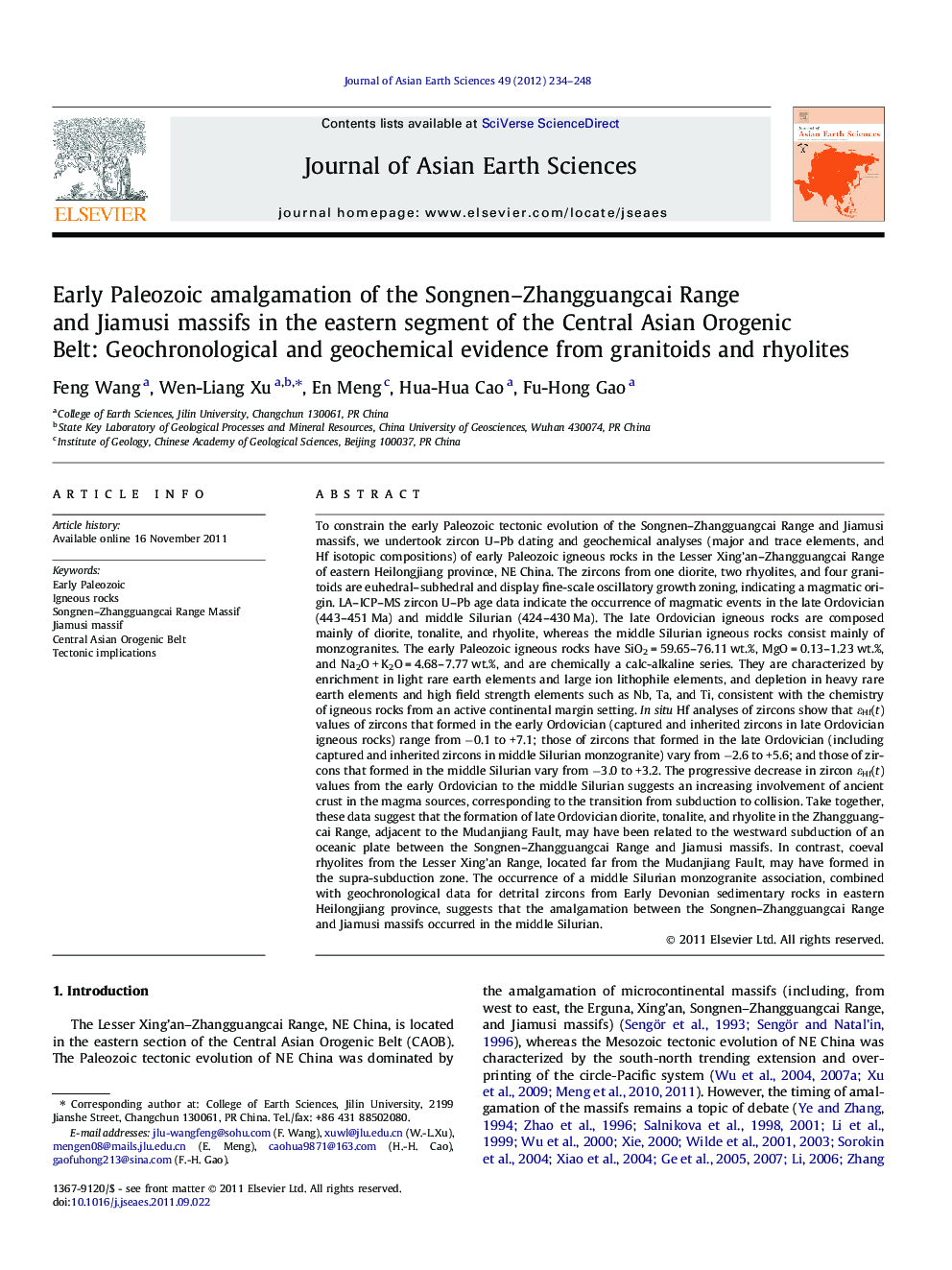| کد مقاله | کد نشریه | سال انتشار | مقاله انگلیسی | نسخه تمام متن |
|---|---|---|---|---|
| 4731516 | 1640415 | 2012 | 15 صفحه PDF | دانلود رایگان |

To constrain the early Paleozoic tectonic evolution of the Songnen–Zhangguangcai Range and Jiamusi massifs, we undertook zircon U–Pb dating and geochemical analyses (major and trace elements, and Hf isotopic compositions) of early Paleozoic igneous rocks in the Lesser Xing’an–Zhangguangcai Range of eastern Heilongjiang province, NE China. The zircons from one diorite, two rhyolites, and four granitoids are euhedral–subhedral and display fine-scale oscillatory growth zoning, indicating a magmatic origin. LA–ICP–MS zircon U–Pb age data indicate the occurrence of magmatic events in the late Ordovician (443–451 Ma) and middle Silurian (424–430 Ma). The late Ordovician igneous rocks are composed mainly of diorite, tonalite, and rhyolite, whereas the middle Silurian igneous rocks consist mainly of monzogranites. The early Paleozoic igneous rocks have SiO2 = 59.65–76.11 wt.%, MgO = 0.13–1.23 wt.%, and Na2O + K2O = 4.68–7.77 wt.%, and are chemically a calc-alkaline series. They are characterized by enrichment in light rare earth elements and large ion lithophile elements, and depletion in heavy rare earth elements and high field strength elements such as Nb, Ta, and Ti, consistent with the chemistry of igneous rocks from an active continental margin setting. In situ Hf analyses of zircons show that εHf(t) values of zircons that formed in the early Ordovician (captured and inherited zircons in late Ordovician igneous rocks) range from −0.1 to +7.1; those of zircons that formed in the late Ordovician (including captured and inherited zircons in middle Silurian monzogranite) vary from −2.6 to +5.6; and those of zircons that formed in the middle Silurian vary from −3.0 to +3.2. The progressive decrease in zircon εHf(t) values from the early Ordovician to the middle Silurian suggests an increasing involvement of ancient crust in the magma sources, corresponding to the transition from subduction to collision. Take together, these data suggest that the formation of late Ordovician diorite, tonalite, and rhyolite in the Zhangguangcai Range, adjacent to the Mudanjiang Fault, may have been related to the westward subduction of an oceanic plate between the Songnen–Zhangguangcai Range and Jiamusi massifs. In contrast, coeval rhyolites from the Lesser Xing’an Range, located far from the Mudanjiang Fault, may have formed in the supra-subduction zone. The occurrence of a middle Silurian monzogranite association, combined with geochronological data for detrital zircons from Early Devonian sedimentary rocks in eastern Heilongjiang province, suggests that the amalgamation between the Songnen–Zhangguangcai Range and Jiamusi massifs occurred in the middle Silurian.
Journal: Journal of Asian Earth Sciences - Volume 49, 30 April 2012, Pages 234–248